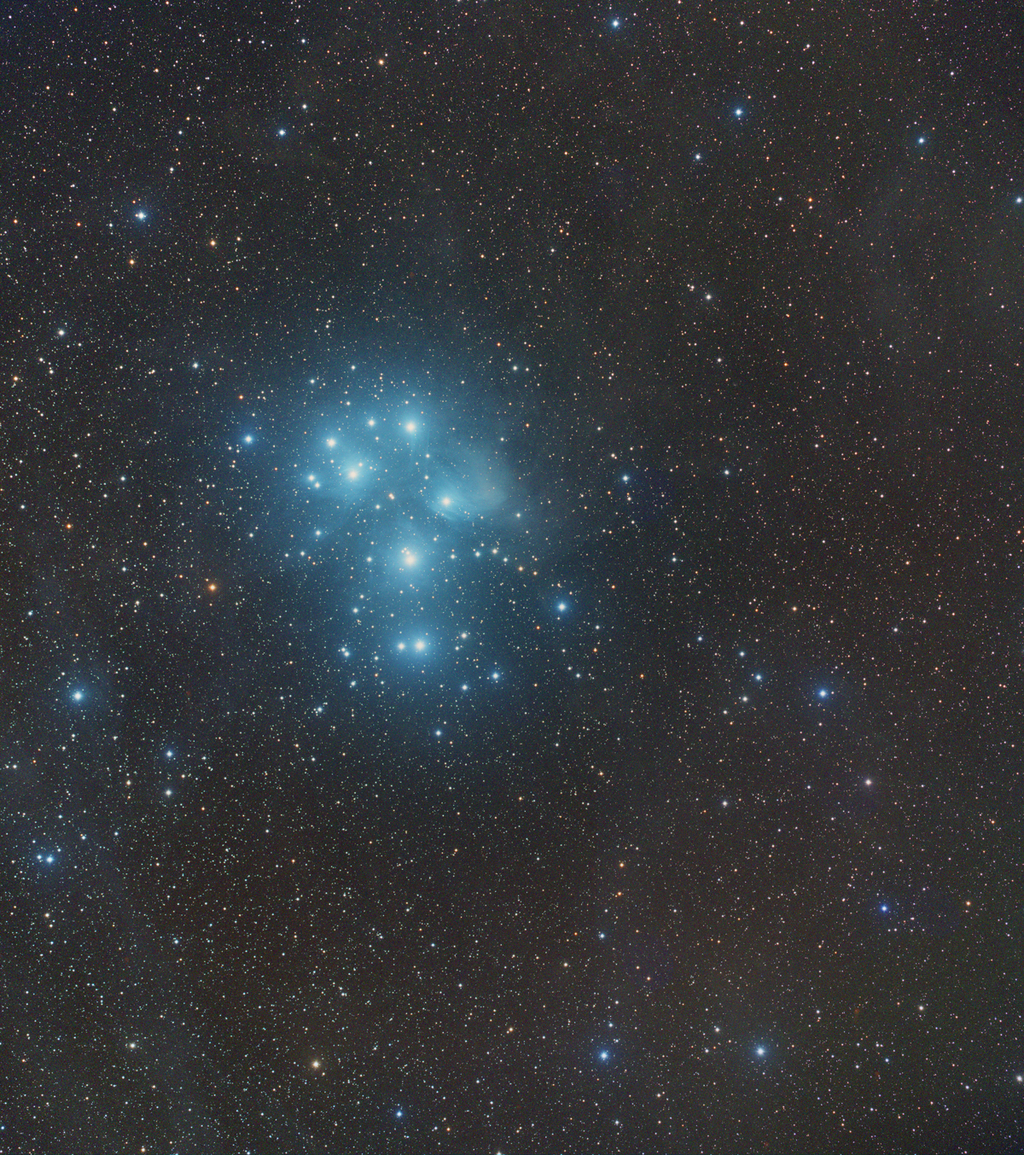What is a Star Cluster?

We have briefly looked at the different types of star clusters in the Deep Sky Classification articles – in summary, globular clusters are tight groups of old stars while open clusters are looser and contain young stars. It is thought that super star clusters, the most massive young open clusters, eventually evolve into globular clusters. Added to that, it is worth mentioning the existence of star clouds, which are large groups of stars which aren’t structured like clusters but can still make nice astrophotography images.
Not only are star clusters pleasing to the eye, they are also very useful for research. The fact that all the stars in a cluster were born around the same time, but with different masses, allows astronomers to investigate the effect that this property has on stellar evolution. In particular, it allows them to quantify the idea, mentioned in the What is a Star article, that larger stars burn their fuel faster than small ones.
Another interesting fact is that our Sun was once part of an embedded cluster, which is a group of young stars that may evolve into an open cluster or, as in the case of the Sun, can disintegrate. In this scenario the stars are left to float in space freely, only constrained by the attraction from the galaxy which they rotate around.
Star clusters are great targets for your first observations as they are usually much brighter than distant galaxies or nebulae. This means that you don’t need to use a telescope with a large diameter, and you can worry less about things like the Moon’s brightness. As well, you can use relatively short exposure times (30-60 seconds frames are usually enough), which in turn allows you to experiment with the Luminance, Red, Blue and Green filters, especially if you’d like to learn how to process the image by yourself – more on that in our tutorials.
Something that you should keep in mind is that most of the star clusters you will choose to observe are not just large objects but are also part of our galaxy the Milky Way, thus being relatively close to Earth. This means that if you want to take an image of the whole cluster, you will need to select a telescope with a large enough field of view, a quantity that corresponds to the range of the sky the telescope can observe.

The field of view is given in arcminutes, a unit used to measure angles; more precisely one arcminute is of a degree. The benefit of using arcminutes and even arcseconds ( of an arcminute) in astronomy is evident considering that even the largest Deep Sky objects won’t take up a lot of space with respect to the whole night sky. The Pleaides, one of the closest star clusters, is about 110 arcminutes in size, more distant ones can be less than 10 arcminutes. As a comparison the Full Moon’s apparent size is 31 arcminutes. Don’t forget that you can use the preview function to make sure you’re observing what you actually want to see!
